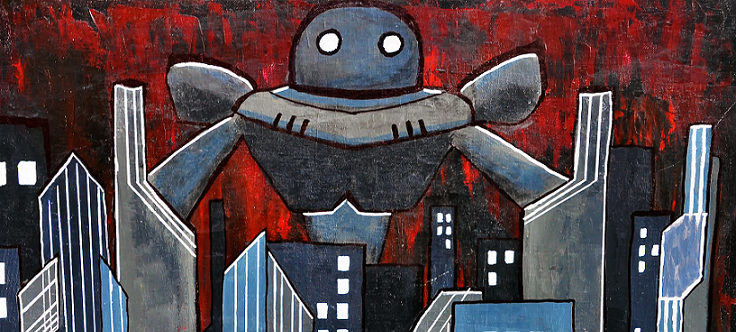Can technology develop a mind of its own? The robot apocalypse is not yet upon us, but the Sharpe group from European Molecular Biology Laboratory (EMBL) in Barcelona has recently demonstrated the capability of a group of robots to self-organize into a swarm without a central control. Modeled after morphogenesis, the spatial organization of biological systems during embryonic development, the spatial behavior of the robot swarm works through feedback loops rather than through top-down control. Since self-organizing systems have the advantage of adaptability in size and shapes and can function despite the unreliability of an individual, replicating this biological process in human technology could pave the way to innovations in machinery, architecture, and pharmaceuticals.
Previous morphogenetic engineering studies had only addressed robotic swarms in small scale simulations or through top-down control, but could a true robot swarm self-organize on a larger scale? The group addressed this question by programming kilobots–cheap robots that allowed for large-scale testing of the functioning of a whole despite the imperfections of the individual–to follow Turing patterns, or patterns derived from feedback mechanisms rather than from positional information.
Combined with robot migration, a Turing pattern determined by virtual molecules allowed the swarm to generate a pattern without relying on individuals’ precise distances and angles from one another. Robots moved only if they were on the edge of the swarm and if they were in a region of low virtual molecular concentration; they were to stop once they reached an area of high molecular concentration called a “Turing spot.” LED lights on the robots represented molecular gradients that allowed the team to observe the spatial patterns formed.
After the team decided that spots, as opposed to stripes or inverted spots, were the best pattern for exploring morphological development, a larger-scale study tested the swarm’s ability to produce more complex morphological shapes. This showed that the swarm could create organic shapes just as biological cells are able to. Test trials without the programmed Turing patterns did not organize to make the same shapes, confirming that the results were indeed a result of patterning rather than simple robot movement. In line with the adaptability of local self-organized systems, the robotic swarm could also reproduce Turing spots no matter what the shape or size of the original swarm was, and if the swarm was damaged; the swarm could still recover the general pattern even if it was split if half.
This robot swarm thus provides all the advantages of an organic, self-organizing system–as the patterns that formed were dynamically adaptable. The morphological patterns persisted throughout the trials despite varying the size of the swarm–ranging from 110 to 300 robots–or varying the initial shape of the swarm–circular or rectangular. “Tissue healing” also occurred with any inflicted damage. These characteristics could be especially useful for applications in nanoengineering, such as drug targeting via a nanoparticle swarm, or in dynamic machinery and structures, such as a bridge that adapts to its river.
There is a still a long way to go before applications like that. Although this proof-of-concept has been achieved here using Turing patterns and feedback mechanisms, the team hopes for a more sophisticated control system in the future able to achieve more complicated shapes.

